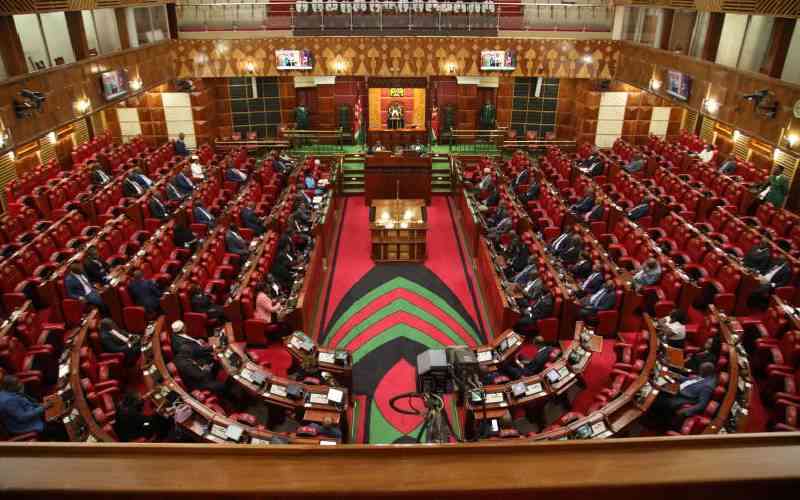
“Now, 49 per cent of your payslip is gone, 6 per cent to NSSF by January. Your wallet is getting a workout and your paycheck is shrinking quicker than you can say abracadabra.”
These were some of the sentiments shared by a social media user after Kenyans took to social media to show how the new payslips will look like after statutory deductions as of October.
While some deductions may be up for debate, the public needs clear communication to understand the importance of contributions such as NSSF for securing their financial future.
Many workers feel that their payslips are increasingly loaded with deductions, leaving less in their hands each month and raising questions about whether this is truly in their best interest.
The outcry is understandable; amid a rising cost of living, more deductions may seem like just one more setback. However, if approached with clear and transparent communication, Kenyans can understand that these deductions are essential investments toward a secure future.
The original NSSF contributions were capped at Sh400 for each employee, a figure unchanged since the fund’s inception over 50 years ago. Inflation and evolving economic challenges have rendered this amount inadequate to support a comfortable retirement, with many Kenyans retiring only to struggle financially due to insufficient savings.
The increased contributions aim to address this issue by gradually building a larger retirement fund, ultimately providing Kenyans with a more stable income after they leave the workforce.
Unfortunately, this message has not been communicated effectively. Without a clear understanding of why these changes are necessary, workers naturally interpret the increase as another burden rather than a benefit.
Public backlash against financial reforms often stems from a lack of clarity, and the situation with NSSF is no different. The government, employers, and NSSF administrators have a responsibility to explain to the public how these deductions work, what they fund, and the benefits employees can expect to receive.
There is a clear opportunity to educate the public on how retirement funds grow over time, emphasizing that NSSF contributions are not simply “money lost” but rather “money saved.”
For example, providing clear, illustrated examples of how contributions will benefit Kenyans in their retirement years could go a long way toward changing perceptions. Showing how a consistent, small monthly deduction can grow into a significant retirement fund over time could illustrate the value of saving early and consistently.
Digital tools
Additionally, the NSSF could provide tools to help employees track their contributions, estimated interest, and projected pension benefits. If employees can see their retirement fund’s growth, it becomes easier to appreciate the sacrifice now for the security later.
Countries with strong social security systems prioritise education around pensions. For example, in Singapore - our promised benchmark - the Central Provident Fund regularly publishes easy-to-understand information, including calculators, online dashboards, and retirement planning tools, all of which make it easy for citizens to track their progress and understand how contributions benefit them.
Kenya could adopt a similar approach, developing a suite of digital tools to empower citizens. Many Kenyans are tech-savvy, and a digital platform with a focus on transparency, accessible from mobile devices, could quickly bridge the gap.
Employers play an influential role in this communication process. By explaining to their employees how the increased contributions will benefit them, they can help calm anxiety and build trust.
Encouraging businesses to offer workshops or informational sessions on retirement planning and the importance of NSSF contributions would create a valuable bridge between the government’s goals and the public’s understanding.
The writer is the head of Pension and Consulting at Enwealth Financial Services
 The Standard Group Plc is a multi-media organization with investments in media
platforms spanning newspaper print operations, television, radio broadcasting,
digital and online services. The Standard Group is recognized as a leading
multi-media house in Kenya with a key influence in matters of national and
international interest.
The Standard Group Plc is a multi-media organization with investments in media
platforms spanning newspaper print operations, television, radio broadcasting,
digital and online services. The Standard Group is recognized as a leading
multi-media house in Kenya with a key influence in matters of national and
international interest.
 The Standard Group Plc is a multi-media organization with investments in media
platforms spanning newspaper print operations, television, radio broadcasting,
digital and online services. The Standard Group is recognized as a leading
multi-media house in Kenya with a key influence in matters of national and
international interest.
The Standard Group Plc is a multi-media organization with investments in media
platforms spanning newspaper print operations, television, radio broadcasting,
digital and online services. The Standard Group is recognized as a leading
multi-media house in Kenya with a key influence in matters of national and
international interest.











